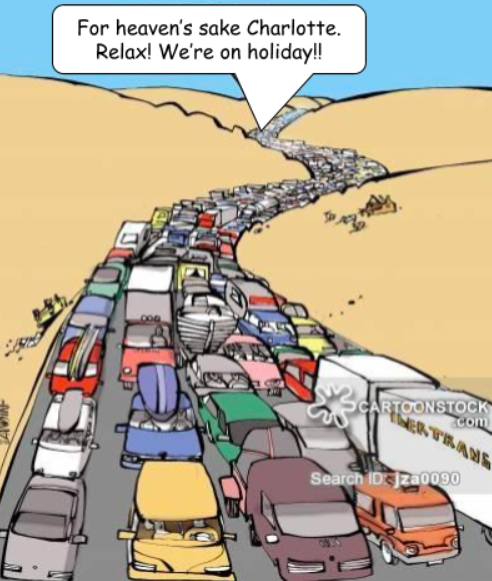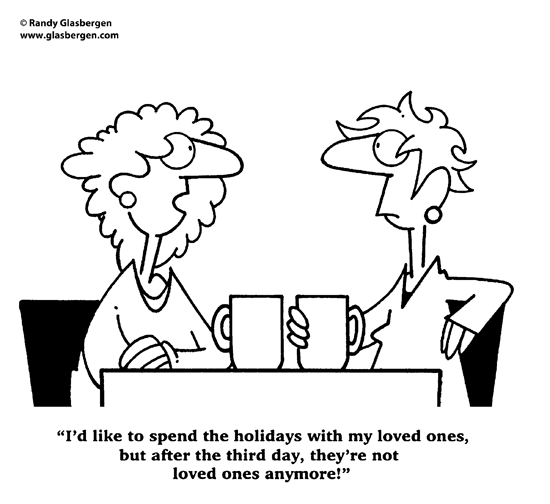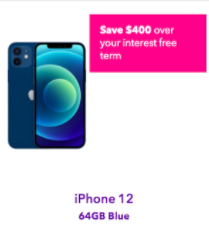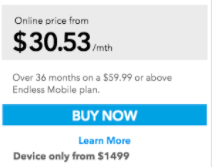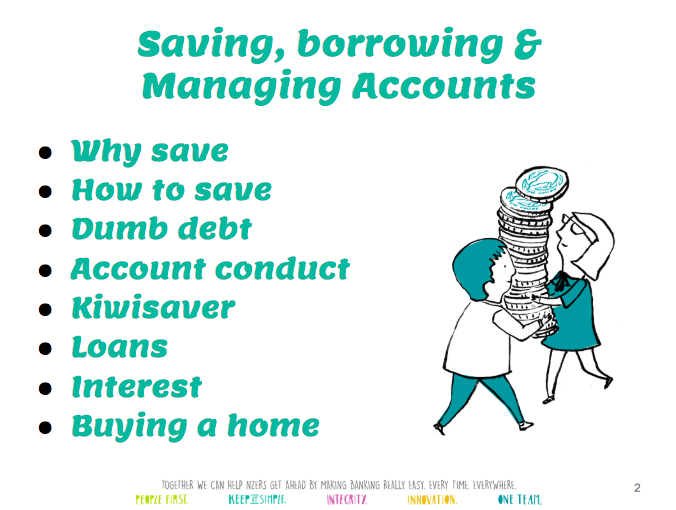10 Business Studies 2
Section outline
-
CONTENTS- Team building
- Entrepreneurs
- Types of Business
- Markets & segmentation
- Market Research
- Marketing Mix - Product, Price, Place, Promotion
- NCEA 1.4 Marketing Mix
- Economics
- Business Issues, goals and stakeholders
- Finance & Accounting
- Market Day - putting it all together
- Web text - Wikibooks GCSE Business Studies
-
Kia ora whānau,
Welcome to Year 10 Business Studies for 2021.
Please email me at akeung@mhjc.school.nz if you have questions about any part of the course.
Mr Keung
We're guided by the NZ Curriculum:
Level 5
Understand how economic decisions impact on people, communities, and nations.
Understand how people’s management of resources impacts on environmental and social sustainability.
Understand how people seek and have sought economic growth through business, enterprise, and innovation.Level 6
Understand how, as a result of scarcity, consumers, producers, and government make choices that affect NZ society.We're also guided by the Themes for Business NCEA Level 1. Topics we'll cover are:
Business formation- describe the different types of business and explain their advantages and disadvantages
- describe the importance of market research
- describe the marketing mix in relation to a target market
- describe the role and skills of the entrepreneur.
- outline the importance of business aims and objectives
- outline why businesses keep financial records
- outline the cash flow cycle (including budgets)
- define different types of business success.
- outline how and why business contributes to the development and well being of society
- identify the stakeholders of a business
- identify sustainable (environmental) business expectations and practices
- describe the competition in the local business environment
-
Team Building
Learning Intentions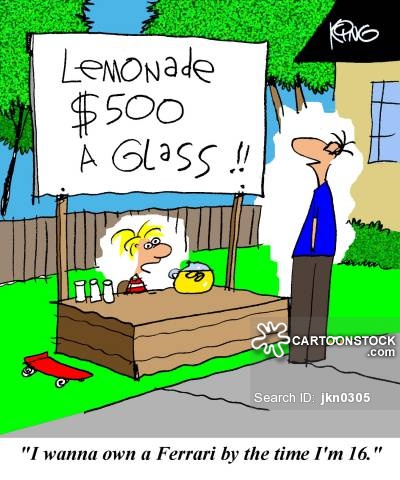
- Start to 'Form' our class as a team
- Build relationships (learn names, backgrounds, etc)
- Discover our Business 'prior knowledge'
- We have worked together to complete a task
- We found things that we have in common
- We know the meaning of common business terms
- In small groups of students representing at least 3 Whanau, click this link and complete the crossword.
Homework- Think about what stage our class team is at - here's a simple resource on 'Stages of Team Formation'
- Contribute to the shared Google Doc in Google Classroom called 'Building a Team'. This link may work.
- The doc asks you to add a photo of something that represents who you are as a person (eg you might be adventurous, home loving, or sporty).
- It asks you to give some information about yourself (a strength or skill that you're proud of, why you chose Business Studies, an embarrassing moment, etc.
- Start to 'Form' our class as a team
-
Entrepreneurs
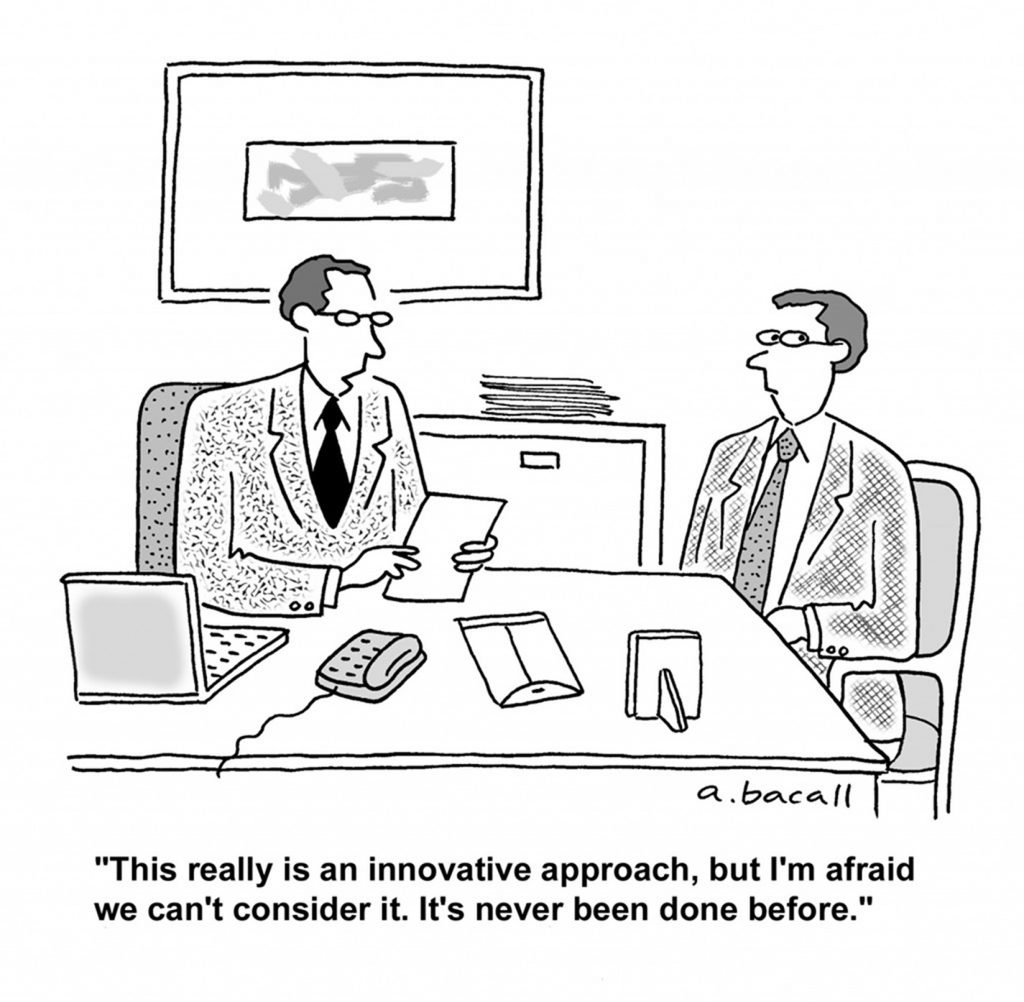
Learning Intentions
- Study case studies of entrepreneurial people
- Investigate the nature of entrepreneurs.
- Explore business purpose/goals/types/examples
- Research pros & cons of business activities (eg multi-national, limited liability)
- We can define an entrepreneur and describe the attributes of an entrepreneur
- We can identify people with entrepreneurial attributes and name examples of entrepreneurial people
- We have identified our own entrepreneurial strengths and areas to develop
- We have started a glossary of business terms
- We can explain the nature of business and its pros & cons.
Kia ora whānau,
I hope you are all doing well in Alert Level 3. This week we should be looking at entrepreneurs: What is an entrepreneur? What are the characteristics or attributes of successful entrepreneurs? In year 9 you may have researched and profiled an entrepreneur.
This week you should research another well known entrepreneur. Read the notes below and then complete the task.
Entrepreneurs are innovative.
They:
- Have ideas AND can put them into action
- Are creative problem solvers (think outside the box)
- Work long hours
- Can sell and / or build
- Can simplify processes and data - identify what's important
- Are effective with people
Task:
An entrepreneur has an idea and risks time, money and reputation putting the idea into action as a business. Read the article below and then complete the tasks below:1. In 1-2 sentences, describe what entrepreneurs do.
2. Choose ONE of the examples of entrepreneurs from the article and explain how the meet the definition of an entrepreneur.
3. Write a simple definition for each of the motivators listed in the article.
4. List the attributes suggested by the article that make a successful entrepreneur.
5. Many of these attributes are not limited to successful entrepreneurs but also apply to any person in any arena that is successful.
a) Which attributes do you consider to be the most important to success. List your top 3.
b) Justify your Top 3 by choosing a successful NZ'er (sports person, musician, politician, tv/movie star etc.) and explain how these chosen attributes have led to their success.
Other Activities
Read:
https://www.entrepreneur.com/article/252049
Small Group Activity- As a whole class, we'll watch the video "Stupid ideas - Dragon's Den"
- In your small group, discuss whether you think Rupert Evans is an entrepreneur and in which of the 6 attributes he is weakest.
-
Entrepreneurs & Innovation
DNA of an Entrepreneur
Task:
1. In your own words write a simple definition for the word 'innovative.'
2. Research an entrepreneur that you believe is innovative and create a slideshow to show the following:
a)Name of entrepreneur & business
b) Describe & give examples of their i) attitude to risk & failure ii) opportunistic mindset
c) Describe their product and explain how you believe it is innovative.
-What is 'new' about it?
-How is it better than what exists?
-Describe its economic value.
d) What other characteristics from the diagram above do they display.
-
Creativity & Innovation
Creativity is about coming up with new ideas. Innovation is about "bringing ideas to life.
It is the act of introducing something new to a product or service.
DO NOW!
Watch the video about shark tank ideas that have been successful and describe how each of the products are innovative?
Product Innovation Task
Complete the product innovation task on google classroom and prepare to present your idea to shark tank investors.
-
DISTANCE LEARNING WEEK (ALERT LEVEL 2)
Kia ora whānau. I hope you are all safe and well during Alert level 2. This week you should be completing the "Innovation" task on google classroom to come up with a new innovative product to present to some potential investors on 'Shark Tank.'
Here are some ideas and examples of how to pitch your idea.
-
Selling Your Idea?
This week you will work in your groups to try and sell your idea for a new innovative product to potential investors.
To help you prepare your presentation, watch the videos below about some techniques used to successfully market and sell products.
Your group should be ready to prepare in class next week.
-
Markets & Business Philosophies
Learning Intentions- Investigate different approaches or philosophies used in business
- Explore different types of markets
- Explore the process of marketing in a business
- We can define the following terms: market; marketing; marketing oriented business; product oriented business; sales oriented business.
- We can describe the differences between each of these types of businesses.
- We are able to recognise the circumstances in which each philosophy may be used by a business
Markets
A market is a place where buyers and sellers can meet to facilitate the exchange or transaction of goods and services. Markets can be physical like a retail outlet, or virtual like an e-retailer.
The term market may also refer to the whole group of buyers for a particular good or service. For example the soft drink market refers to sales of soft drinks. It would include sales of all brands of soft drinks over a certain period.
Market Size
Market size can be measured by two factors:
- Number of sellers and Buyers
- Total sales annually
Businesses that operate in markets are usually in competition with other companies. Market size is often measure by looking at the total sales ($) in the market each year. Entrepreneurs and businesses often use market size to estimate potential earnings or profits in the market for new products or services. This also helps decision-makers to decide whether they should invest in the business.
Market ShareMarket share is the percentage of a market accounted for by a specific business.
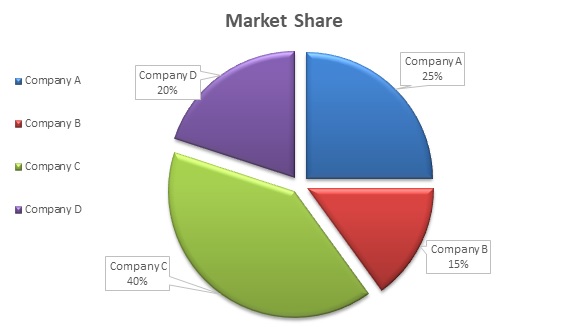
Market share is a measure of the consumers' preference for a product over other similar products. It helps businesses to see how competitive they are in the market. It could help them investigate ways that might help them to increase their market share.
Business Philosophies
This week we will look at a few different business approaches utilised by different businesses.
Watch each of the following video's and then answer the following questions about each approach.
Remember to answer each of these questions in your own words:- Describe a the business approach or philosophy.
- What is the problem or any challenges with using this type of philosophy?
- In what circumstances would using this this approach or philosophy be most successful?
Production Orientation:
Sales Orientation:
Market Orientation: -
Marketing & Market Segmentation
Learning Intentions- Explore the process of marketing in a business
- Investigate the process of market segmentation in identifying the target market for specific products or services
- We can define marketing and market segmentation
- We can identify the basic market segments: demographics; psychographic; geographic; behavioural
- We are able to identify the characteristics of each market segment
- We are able to describe the target market for specific products or services
Marketing follows a market oriented approach where businesses seek to identify customer wants, and future wants and then goes about trying to satisfy them profitably.
To do this they must first determine who the most likely users or consumers of their products or services are. This will allow them to identify the needs and wants of these consumers to ensure that their product is developed to meet these needs. The group identified is called the target market.
Market SegmentationTo help identify the target market, prospective customers are divided into groups (segments) that have common needs and wants. There are many ways to do this. Four common segments used by marketers are:
Possible Target Market for Ferrari F8 Tributo
Demographic
Age: Middle aged. This because the are most likely finished university etc and have been working for some time to accumulate enough wealth to purchase this car
Gender: Most likely male.
Socio Economic Status: High income.
Family life cycle: Single or retired, Children have grown up. Car is a two-door, so is not suitable for passengers apart from the owners partner or date.
Psychographic
Sporty. Likes car racing, speed etc. Possibly F1 fan as Ferrari races in F1.
Social status: Wealthy to be able to afford this car.
Personality: Wants people to know his social status, know that he is successful (rich).
Values & Attitudes: Wants something exclusive that not many other people have.
Geographic
Resides in a wealthy suburb
Large cities in well developed countries
Behavioural
Likes luxury. Happy to spend for high quality. Brand must be well known.
TASK: Using all four of the basic market segments above, identify the possible target market for the products below. Explain your answer by stating reasons for your suggestions.
Dove beauty soap
Barbie Doll
Revlon Lipstick
-
Market Research
Market research is defined as the process of gathering data on goods and services to determine whether the product or service will satisfy customers' needs.
To find out the needs and wants of their customers or consumers, businesses invest in market research to collect this information.
Types of information
Market research seeks to collect two basic types of data:
Quantitative: tells us “how many.” This data can be measured. It can measure how customers think, feel or act in regards to a particular product or service. For example how many people prefer coke to coke no sugar; How many people would be willing to pay a certain price for a product or service etc.
Qualitative: answers questions where an opinion or judgment is necessary. It helps businesses to know the 'why' or 'why not' in regards to their products and services. Qualitative research is important for gaining a broad understanding of the reasons and motivations behind consumer decisions. For example, asking consumers:
- What do you like about our product?
- What could we do to improve this product?
- Why wouldn't you buy this product?
Businesses use two types of data collection to gather this information
Primary Market ResearchThis is sometimes referred to as "field research." It involves the collection and collation of original data from potential or existing customers. Field research includes conducting;
- Questionnaires
- Interviews
- Consumer panels
- Focus Groups
- Observations
There are business that specialise directly in collecting primary market research for other businesses. Whether businesses conduct this research themselves or pay someone else to do this, it can be a costly and lengthy process. However, market research can identify market trends, demographics, psychographics, behavioural segments, economic shifts, customer's buying habits, and important information that may give it a competitive advantage. It can also help a business to know what type of products or services would be profitable to introduce in the market.
For existing products, it can help the business to know where to allocate its funds and resources efficiently. It enables a company to know if it has been able to satisfy customer needs and whether any changes need to be made in the development, packaging, advertising, delivery or the product itself.
Secondary Market ResearchThis is sometimes referred to as "desk research." It involves using information that has already been collected by other agencies or sources.
Can be from both internal (within the business itself) or external sources.

GROUP TASK:
In your groups, conduct some primary market research in our class to determine the possible success of a proposed new product for McDonalds. For example, a new burger, combo, sundae, drink OR any idea your group may have.
- Describe (in detail) your proposed target market for the new product
- Describe the actual product (ingredients etc.)
- Be sure to collect both quantitative and qualitative data.
- Summarise your results on a doc or slideshow to share your findings. According to your research, will this idea be successful?
-
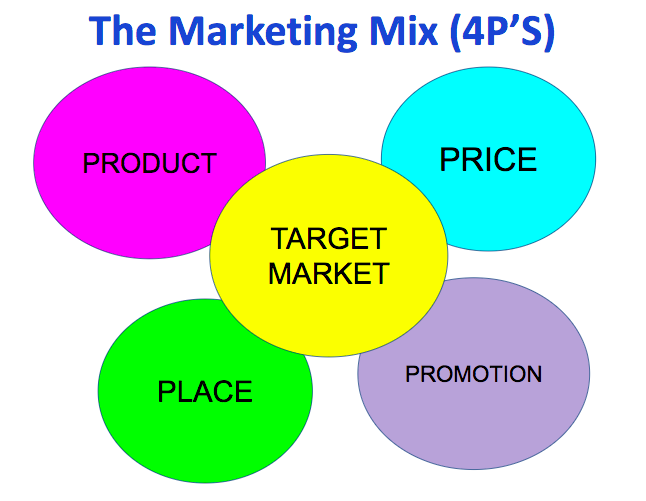
This week we will start looking at the marketing mix.
Essentially, the marketing mix is a combination of the 4P's, product, price, place and promotion. Simply put, it is about putting the right product in the right place, at the right time, and at the right price. You will see that in the diagram that at the centre of this mix is the target market. This is the group of consumers to which the product or service is aimed.
The marketing mix includes the actions that a business will take to research and find out what their target market needs or wants from their product, developing the product features including packaging that will appeal to the target market, promoting this product so that the target market are informed of how the product will meet their needs and wants, where they can find it and how much it will cost them.
DO NOW! Watch the video below and then answer the questions that follow:
- Define the marketing mix
- List some of the features included for each of the 4P's: Product; Price; Place; Promotion.
- Why is it important to know who your target market is? Explain using the 4P's.
TASK: PRODUCT PROFILE & TARGET MARKET
1. Choose a specific product to profile for this activity.
For example: Not 'coke.' Coke is a brand. Be specific! A 375ml can of coke no sugar.
This will help you with identifying the target market for the product. There is a difference between the target market of a 2 litre bottle of coke and 375ml can.
Likewise is you are choosing a product that comes in a range of colours, then choose a specific colour. E.g. iPhone 11 Pro Max come in midnight green, space grey, silver and gold finishes.
2. Describe in detail the target market for your chosen product. Ensure that you look at demographic; psychographic; geographic; behavioural characteristics.
3. Answer the following questions about your chosen product:
- What’s the name of the product?
- Does it have a catchy name?
- Does the name suggest anything about the product?
- Is there anything in the name that appeals to the target market.
- What does the product look like?
- What are the sizes or colours available?
- How does the size or colour appeal to the target market
- What does the target market need or want from the product?
- How will the customer use it? Where will they use it?
- What features does the product have to meet the customers needs?
- What are its functions? (What does it do?)
-
Welcome back to school. Hopefully you are feeling refreshed and ready to work. This term we will prepare for our first assessment. For some of you, this will be the NCEA Achievement Standard (AS90840) Apply the marketing mix to a new or existing product.
This week we will review the marketing mix and begin focusing on the first and most important "P" of the 4P's in the marketing mix, PRODUCT!
The 4P's: PRODUCT
Marketing is about focusing business activities on satisfying the needs and wants of customers. A businesses products or services are most important because it has been produced for that purpose. To be successful a business must ensure they have the right type of product that is in demand for their market. Most markets have many competitors so a business will try and offer something that is different or better than the competition. They often look to create unique selling points to their products or services that distinguish their products from the competition. This could include product modifications or innovations (new features) to products or services. This can also be achieved through packaging and branding. In business, when it comes to developing a product, the design, quality, packaging, features, and functions should all be considered. -
Product
Product is the most important “P” in the marketing mix. A successful product has to fulfil a specific need in the market. It’s design, appearance, packaging are all important factors. Functionally, it must be able to perform its function as promised.
In applying marketing principles, businesses should develop and design their products with their target market in mind. The design, appearance, colour and size of a product should appeal to the target market.
The purpose for why consumers would use the product would also be considered in the development of the product. Product Functions, or the things that product is able do, should also be designed to meet the needs of the target market.

For example, this vacuum cleaner has been designed for commercial use. The target market is professional cleaners who need a vacuum cleaner that is powerful, portable or easy to move around. The design of this vacuum includes a backpack so users can move freely around rooms without the vacuum getting caught on furniture etc. It has a powerful 1000W motor that allows rooms to be cleaned better and faster. All of these functions were considered during the design and development phase of the product.
Task:
Choose a specific product to profile and then complete the following tasks on a doc or slideshow:
Product description.
Fully describe your chosen product. Your description should include:
- Name of the product
- Name of the company that makes or sells this product?
- Features of your product. Colour? Size? Specs etc.
- Functions of the product. What does it do? OR what is it used for?
- Why do people buy your product? What needs or wants does it attempt to satisfy for consumers?
- Include a picture of your product.
Target Market description
- Describe the intended target market of this product. Ensure that you look at a range of factors (at least three) from demographic, psychographic, lifestyle etc. in your description.
- Explain or give reasons for your choices. Use examples from any features or functions of the product that will appeal to your specified target market. Explain how these features or functions help to satisfy the needs of your target market.
-
Product Packaging
DO NOW! Watch the video below then write a short summary to explain "why boxes are most commonly used as packaging for products?"
Packaging can often as important as the product itself. The most important function of packaging is to minimize product damage. However, packaging can be used for so many more marketing purposes that some marketing experts consider it be the '5th P' of the marketing mix. Packaging can be seen as an opportunity to shows off the product. It can be used to display the price and value of the product and it is a way to communicate the product’s benefits to consumers.
Some other functions of packaging:
Packaging can:
- add to a products usefulness. E.g. Drinks with straws, easy pour spout
- contain and preserve the product
- facilitate the filling of the package
- make the product easy to close or open
- allow the product to be packed and carried easily
- allow the product to be durable for distribution
- attract attention on the shelf
- can be used as a vehicle for segmentation. E.g. For people who live alone, products like Soup in a cup, or Sara Lee’s single serve cake. OR Family packs, OR packaging for bulk or commercial use.
- be used for branding and labelling purposes
- add visual appeal to draw attention of customers
Task:
Describe the features of the packaging used for your chosen product. Look at the functions of packaging (from above notes OR on slideshow on google classroom) and see if any apply to your product.
Fully explain (give reasons) the purpose of the packaging features used for your product.
-
Unique Selling Points (USP's)
An important part of the marketing of the product is through product differentiation. This means making the product different from its competitors. These differences are often referred to as unique selling points
This can be achieved through:
- Distinctive design– e.g. Dyson; Apple iPhone
- Packaging – e.g. Toblerone
- Performance - e.g. Mercedes, BMW
- Branding - e.g. Nike, Reebok
Branding
Branding is one method that businesses use to make their products or services unique or to stand out from the competition. It may include:
- brand image
- unique name or logo
- unique packaging
- unique functions:
Brand creates & influences consumers perceptions of the business or their products & services. Branding is about creating an image that a business wants people to think about their company and products. Business may spend a lot of money on promoting their brand image. Some businesses spend very little.
Task: Branding & Consumer Perceptions
.
- What are your perceptions of these two brands?
- Describe the target market that these brands would appeal to.
- Explain why these perceptions might appeal to the intended target market.
- How much do you think each business use to promote its brand image? Explain.
-
Product Life Cycle
Products do not last forever. Like people, they go through different stages in their life. The life cycle of a product is broken into four stages—introduction, growth, maturity, and decline although some marketers also include a "saturation" stage between maturity & decline.
It is often used by marketing experts as a planning tool in deciding when it is appropriate to increase advertising, reduce prices, expand to new markets, or redesign packaging. This tool has a some limitations as not all products follow a smooth and predictable growth path.
Task 1: Stages of the PLC
What stage of the PLC would the following products be in?
- PS4
- Iphone 6
- Samsung Galaxy Z Fold
- Watties baked beans
Task 2: Informative v Persuasive Advertising & PLC
Watch the two advertisements above and then answer the following questions:
- What information is given about the Iphone 12 in the first advertisement?
- Explain why the Iphone advertisement contains more information than the Nike ad.
- What stage of the PLC is the Iphone 12 in? Explain why this type of advertising would be appropriate given the stage of the PLC that it is currently in.
- What information is given about a NIKE product in the second advertisement?
- What is the message of the Nike ad? What perceptions (ideas or thoughts) does the ad try to portray about people who use Nike products?
- Why is this type of advertising suitable for this stage of the PLC for Nike products.
-
Price
Determining the price of a product is an extremely important decision because it determines the amount of profit a business will earn from sales of their product.
Factors to consider:
- Costs of production: The price that the business charges must recover the costs of production in order to make a profit.
- Competitive conditions in the market: Demand and supply in the market needs to be considered. If demand for a product is high but supply is low, then a business can take advantage of the market conditions and charge a higher price in order to maximise profits. For example, petrol & oil. When supply in the market is low, petrol companies raise their prices.
- Competitors prices: The business will need to ensure that the price charged is reasonable compared to competitors products or they may lose sales to the competition.
- Stage of the product life cycle: The age of the product may have an effect on the price of a product. For some products like grocery items their price remains relatively constant unless market conditions change or the business runs some promotions etc. Other products (like technology), the price may lower over time due to newer, more advanced models entering the market.
- Price/Quality perceptions: It is also important as the chosen price may also create perceptions to consumers about the quality of the product. Consumers naturally perceive that high-priced products are also of a high quality and vice-versa. Thus, when choosing a price for its product, a business must be careful to choose a price that will fit the rest of the marketing mix and most importantly will appeal to its target market. The chosen price should complement the chosen brand image for the product.
- Pricing strategies for new products vs. existing products: For new products entering a competitive market some businesses may decide to charge a price lower than the competition to try and entice consumers who buy existing brands to possibly try their product and like it so that later in the products life cycle (as they gain regular customers) they may then increase their price. This is called a price penetration strategy.
Pricing Strategies
Cost-Plus Pricing
The business takes into account the cost of manufacturing the product and then adds on a profit mark-up. This can either simply cover costs or include an element of profit. It focuses on the product itself and does not take into account consumers’ expectations or perceptions. It is very easy to apply but the business may lose sales if their price is more than competitors.
Penetration Pricing
This is where the business sets the price lower than the competition to ‘penetrate the market.’ This is often useful when launching into a new or highly competitive market. It is typically used with mass market products – chocolate bars, food stuffs, household goods, etc. It is also suitable for products with long anticipated product life cycles.
Other benefits:
- Market share is quickly won.
- Encourages consumers to develop a habit of buying
- ‘Low’ price to secure high volumes
Price Skimming Strategy
This is where the business sets an initial high price for a unique product encouraging those who want to be ‘first to buy’ to pay a premium price. Later in the products life cycle they may then lower the price. It is usually used alongside a promotional campaign to create high demand for the new product before it is even launched. This strategy helps a business to gain maximum revenue before a competitor's product reaches the market. This is often used with technology products like mobile phones and devices.
Loss Leaders
This is where chosen goods/services are deliberately sold below cost to encourage sales elsewhere in the business. The business hopes that the purchases of other items more than covers ‘loss’ on item sold. It is typically used in supermarkets, e.g. at Christmas, selling bottles of coke at $0.99 in the hope that people will be attracted to the store and buy other products as well that will cover the loss made on the coke. Cell phones & contracts are another example.
Psychological Pricing.
This when particular attention is paid to the effect that the price of a product will have upon the consumers perceptions of the product. It may involve charging a very high price for a high quality product so that high income customers may wish to purchase it as a status symbol. E.g. Ferrari. Alternatively, it may charge a more reasonable or lower price so that consumers perceive it as an ‘affordable’, ‘value for money’ product.
 Another example of psychological pricing is selling products for $199 instead of $200 is also an example of psychological pricing as it creates the impression of being much cheaper.
Another example of psychological pricing is selling products for $199 instead of $200 is also an example of psychological pricing as it creates the impression of being much cheaper.Promotional Pricing
This is when products might be sold “on sale” or at a lower price for a short period of time. It includes “buy 1 and get 1 free” deals. It is useful for getting rid of unwanted stock. It could help renew interest in a business if sales are falling. The challenge for businesses is that the lower price also reduces sales revenue and profits.
-
Promotion
The aim of promotion is to:
- increase awareness
- create interest
- provide information
- stimulate demand to generate sales
- differentiate the product or create brand loyalty
- Reinforce the brand
Promotional Strategies
A business will plan and implement a promotional strategy to inform their intended target market of the product or service. The strategy may include methods like advertising, sales promotions, sponsorships, public relations campaigns, point-of-sales displays etc. They may use a wide variety of media from TV, radio, social media, newspapers, magazines etc.

Task: Research at least two of the methods above that your business uses to promote its brand or products. For each method:
- Describe how the method is used.
- What are the benefits of using this promotional method? What are the costs or drawbacks?
- Find examples of how your business uses these methods and describe them.
- Who is this promotion aimed at? Who is the intended audience?
- What is the intended purpose of this promotional activity for the business (increase awareness, create interest, provide information etc.)?
- In your opinion, is the promotional method used effective? Explain why or why not. Justify your answers
-
Learning Intentions
- To apply what we've learned in class to a real life product
- To experience an NCEA Level 1 assessment (and hopefully gain 3 credits at Excellence)
- Have decided which product's marketing mix to analyse and have planned, and completed, research.
- Have completed part of the final report
NCEA 1.4
NCEA AS90840 (1.4) Apply the marketing mix to a new or existing productLOOK at these examples of student work as90840 and read the examiner's comments.
http://www.nzqa.govt.nz/ncea/subjects/business-studies/annotated-exemplars-2/level-1-as90840/
Learning Intentions- To apply what we've learned in class to a real life product
- To experience an NCEA Level 1 assessment (and hopefully gain 3 credits at Excellence)
- Have read the student instructions again and the examples of student work with examiner comments
- Have completed the final report
Assessment is due Friday 6 August (Week 2) at 4:00pm.
-
Place
Place refers to the distribution methods and location businesses use for their products or services to be easily accessible to the target customers. It is how the product is bought and where it is bought.
Business location is a unique factor that can give a business strong competitive advantage.
- Factors to consider:
- Costs of lease/owning store
- Customer Traffic − Number of customers visiting the location etc
- Convenience − Proximity to residential areas, proximity to public transport facility.
Task 1: What affects place decisions?
- Read each of the factors from the link below
- Identify and describe which factors apply to your chosen product. Type of product? Technicality? Purchase frequency? Price? Durability? Location of customers? Where do competitors sell their products?
https://igcseaid.com/notes/business-studies-0450/3-3-marketing-mix/
Distribution Channels
A business may decide to sell their products directly to its customers or may use resellers like wholesalers and retailers to sell their products. The factors that you looked at in Task 1 above will be considered in making thiese decisions.
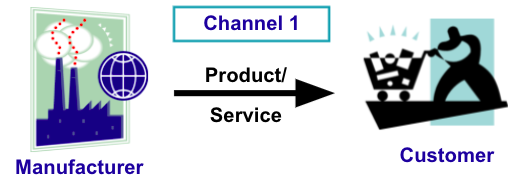
Direct Selling
The product is sold to the consumer straight from the manufacturer. Distribution methods may include, but are not limited to, door-to-door, retail, online sales, mail order.
Using Resellers
Manufacturers can choose to sell products directly through wholesalers or retailers or vendors as a distribution strategy. There are a number of distribution channels available:


Sometime when a manufacturer sells in overseas markets they may also use an agent who has expertise in the overseas market to distribute their products. This is sometimes referred to as a channel 4 distribution channel
CHANNEL 4
MANUFACTURER ------AGENT------WHOLESALER--------RETAILER------CONSUMER
Task 2: Distribution Channels
- Identify which channel of distribution the manufacturer of your business uses?
- Identify which channel of distribution competitors use?
- Go to the link below and look at the table of the advantages and disadvantages for each channel of distribution. Using the channel of distribution you identified in Q1. List the advantages and disadvantages for the business of your chosen product.
OTHER DISTRIBUTION STRATEGIES
Selective Distribution Strategy
This strategy is where a business may choose to distribute products only to a few select businesses or customers in a specific geographical area. It is often used for selling upscale products and is sold by resellers who deal only with high-quality products.
Benefits
The business is able to ensure that the selected outlets meet the image of the brand to ensure customers have a good experience. Improved customer satisfaction will lead to repeat purchases and customer loyalty.
Exclusive Distribution Strategy
This strategy restricts product distribution to only one reseller in a geographical area. The reseller will have exclusive rights to sell the product or service. Often used with specialty products that you can promote as prestigious because you are the sole supplier and the intermediary is the sole reseller.
Exclusive distribution is an agreement between a distributor and a manufacturer that the manufacturer will not sell the product to anyone else and will sell it only to the exclusive distributor. At the same time, even the exclusive distributor has to enter the agreement that he will only sell the products of the manufacturers exclusively and will not sell those of the competition. This ways, the market is an open ground for the manufacturer and the distributor and they have complete control on the distribution of the product.

-
E te whānau, nau mai hoki mai ki te wāhanga tuatoru o te tau. Ko te tumanako, he pai ō koutou hararei.
Welcome back to school whānau and to term. Hopefully you have had a good holiday.
We will be working on completing the NCEA Marketing Mix assessment. -
Market Day 2021
This will be held on Wed 29th September (Week 10). This week you will choose your groups for market day (4 max), assigning roles responsibilities and then start brainstorming your business ideas.
Your next assessment will be to prepare a business plan for your market day project. This will be a group assessment. I have attached rules, the assessment rubric and an exemplar on our google classroom page for you to review and to start planning. -
Learning Intentions
Students will be able to:
- Understand the need for a business plan;
- Recognise the information included in a business plan
- Able to create and review a business plan
Business Planning
Good business planning is an essential requirement if a business is to succeed. A business plan is a document setting out information about the way in which the business will operate.
Business plans are drawn up when a business sets up for the first time and are amended and revised when the business wants to change - typically when it wants to expand.
Who uses business plans?
The business plan is written for the owner to give a guide to run the business.
It is also written for financial backers, and lenders of money such as banks to help them to determine the risks and viability of business proposals
What's in a business plan?
Important details to be included in a business plan include:
- the business idea/s
- the market (types of customers, size of market)
- the nature of the competition
- details of the business owner
- resources used in the business
- the marketing mix - price, promotion, place (as well as product or service)
- equipment needed by the business
- premises required by the business.
- sources of finance
- budgets
- market research
- marketing mix
- operations
-

Learning Intentions- Describe the importance of a SWOT analysis
- Identify the key components of a SWOT analysis
- Construct and utilize a SWOT analysis of their own in a mock scenario
- Can describe and explain the 4 different areas of a SWOT analysis
- Can conduct a SWOT analysis for own business idea
SWOT Analysis
It is the first stage of planning and helps marketers to focus on key issues. Businesses often use this to assess a product in terms of strengths, weaknesses, opportunities, and threats of the product. It can also be used to assess the business as a whole.
Strengths and weaknesses: These are internal factors that relate to the actual position of the product. They are factors that the business can control
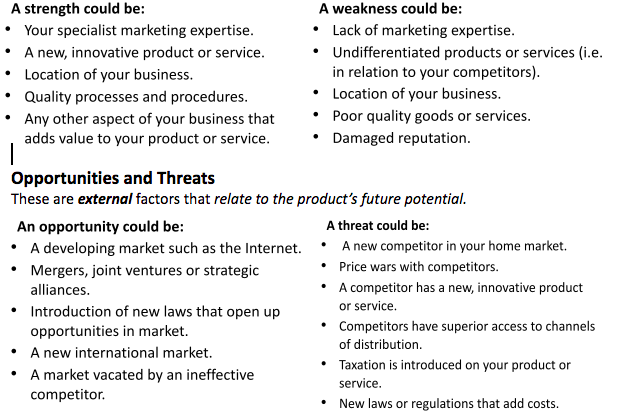
-

Learning Intentions
- To explore business aims and objectives, and the conflicting interests of different stakeholders.
- To explore how business impacts on society and how pressure groups and government can influence decisions.
- To explore why some businesses are run sustainably and 'environmentally', and some are not.
- Can explain different business goals that influence an issue.
- Have raised awareness or advocated a change of practice, beyond school (eg article presentation, emails)
- Can describe different stakeholders in a business issue.
You should by now have looked through the resources on business issues (eg pollution, health) and chosen an issue that is of interest to you.
Research the winners and losers in this issue and the organisations that should protect the 'losers' and that are enabling the 'winners' to continue.
Try to understand exactly why the problem continues and what the costs are on all the people involved.
-
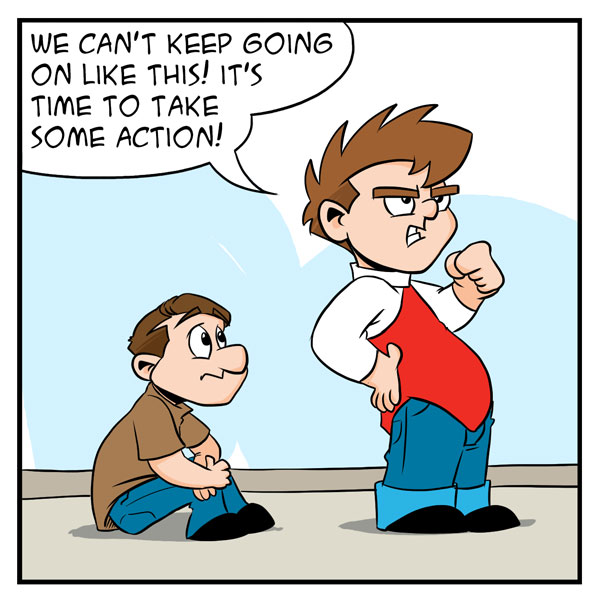
Now you have a full understanding of your business issue - it's causes, effects, enablers (those allowing it to continue) and potential change agents (those that could change it), it's time to finish drafting your poster, slide presentation, email list, news article, etc. In other words, it's time to DO something to change things. -
Assessment 2
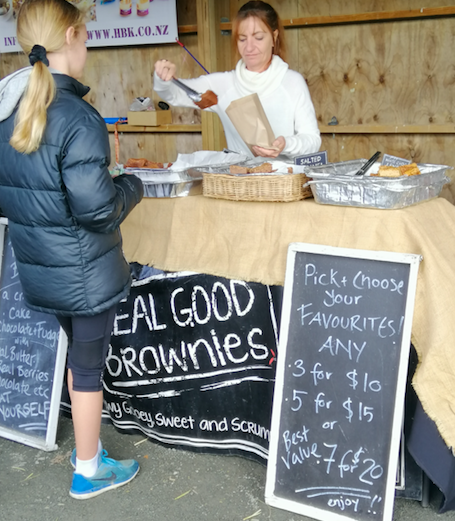
Assessment deadline is Friday. Make sure you've submitted it early for feedback.
Market Day
START THINKING ABOUT MARKET DAY on Tuesday of Term 4 Week 1 (15th October).
Rules:
- No on-selling existing products (eg Sprite) - you must make all your products from raw materials.
- As a Year 10, you are expected to have original, creative and high quality ideas & products.
- A product is
- a good (artwork, craft, food, soap, plants, etc) or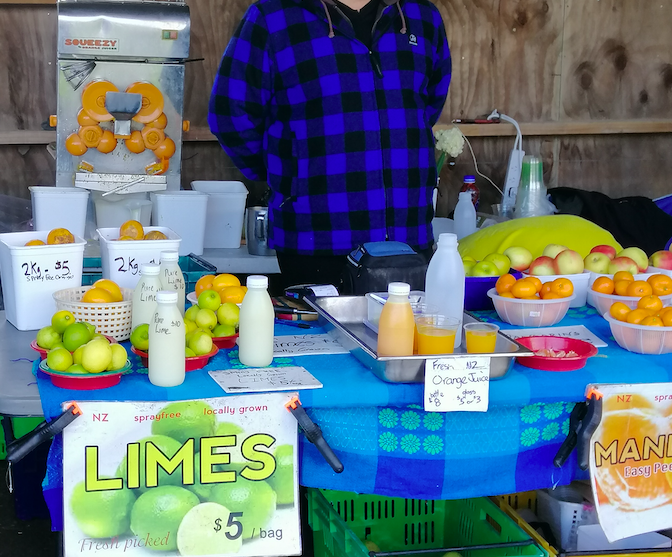
- a service (wash, paint, advertise, organise, etc) - Maximum of 4 group members
-
Business Scenario
Learning Intentions
- To explore how financial information is used to make decisions.
- To explore how businesses record financial information.
- To experience running a business as a team in a simulation scenario
- Can explain how financial and non-financial information supports decision making at home and in business.
- Able to record transactions in a Cash Flow Statement and summarise them in a Balance Sheet & Income Statement
- Have run a simulated business as a team.
Introduction to Accounting and the Business Scenario
Accounting is recording and analysing financial information to help people to make decisions. The Google Doc in Classroom has some notes and activities.
This term, we'll work in small teams to simulate running a business. We'll pretend that the term covers the 6 months January to June. Each week, the teacher will give your team a card or situation that you have to discuss, make a decision on, and then record the effects in a Cash Flow Statement. Later on, you'll prepare a Balance Sheet (Statement of Financial Position) and an Income Statement (Statement of Financial Performance in order to summarise what's happened.Everything you need is in the Google Doc called Business Scenario in Google Classroom. The tables that you'll be completing look like these below:
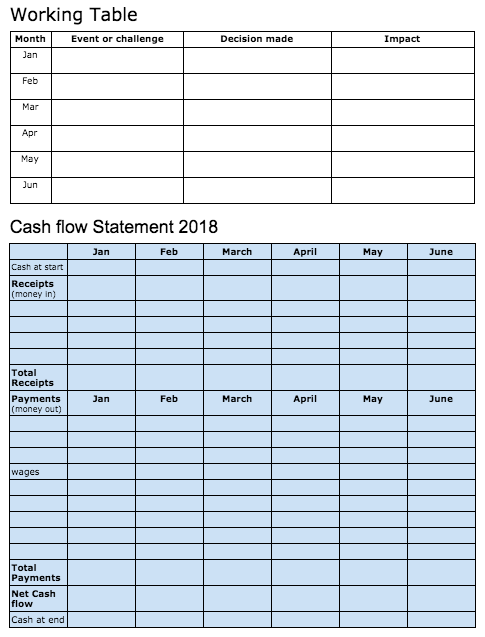
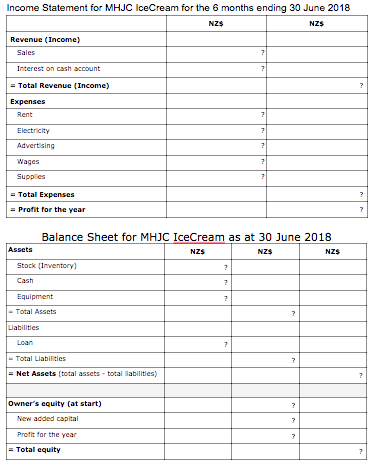
-
Learning Intentions
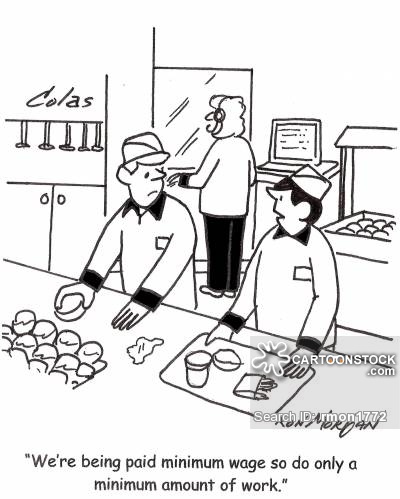
- To explore the ways people earn income.
- To explore the 'Labour Market' and the relative gains of wealth and income.
- Can describe different types of income and tax.
Income
The Labour market is the way in which suppliers of labour (workers) and those that demand (and pay for) labour (businesses) come together to exchange.
Consider whether the labour market is fair! Discuss whether Neymar is worth $90 million per year, (Ronaldo $108M and Messi $111M). Explain why you think this. Then discuss whether nurses or less valuable to society than football or basketball players? Discuss whether the pay you receive reflects the value society places on you, or whether it reflects some other factor.
Answer the questions in the activity on Google Classroom called "Income".
Types of income
Wages are based on an hourly rate multiplied by the number of hours worked. They are often paid for manual work, eg in the building and retail industries.
Salaries are stated on a yearly basis, although they are paid in instalments, normally every two weeks. The same amount is paid, no matter how many hours are worked! Teachers, managers, accountants are usually paid this way.
Independent contracting is when a person with specific skills works for a business to do a specific task, normally for a set period of time and for a set amount of money. At the end of the contract, they find a new contract for a new client. Contractors are viewed as self-employed.
Sales commission is a percentage of the value of the product that is paid to the sales person or agent. This is how Real Estate Agents are paid. This provides an incentive to sell lots. Sometimes, you might receive a set wage or salary, with commission paid on top.
Royalties are similar to commission, but are paid to an author or artist when their text, music, artwork is used.
Interest is received when you have savings in a bank or other financial institution. This is a form of income. If you win the lottery and save the money in a bank, you might be able to take out the interest each month and live on this - just!
-
Learning Intentions
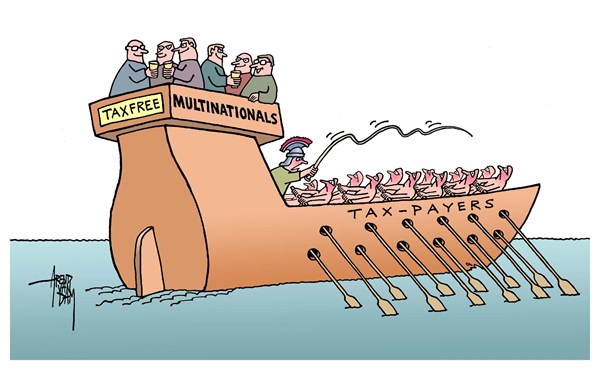
- To explore how financial information is used to make decisions.
- To explore good practice in spending, saving and borrowing and with a professional.
- Can describe different types of income and tax
- Can describe the ways that taxes are used by the Government.
Introduction to tax
The Government needs to raise funds to pay for public services (eg healthcare, police, nurses, schools) and infrastructure (eg roads, national parks). The main way in which they raise these funds is through taxes. In NZ, just under $100 billion is collected each year.
The main types of tax are:
1. Income Tax (PAYE)
Pay As You Earn (PAYE) is deducted from wages and salaries, before you receive the money. It is a 'Progressive Tax', meaning that if you earn higher income, you pay a higher percentage of your income in tax. We'll discuss the table below, but in simple terms it shows that:
- if you earn $14,000 you pay 10.5% ($1,470). I
- if you earn $14,100 you pay 10.5% on the first $14,000 and 17.5% on the extra $100; that's tax of $1,470 plus $17.50 which totals $1,487.50.
Activity: Calculate the income tax that you would pay if you earned $50,000 pa. The table below will help you.
2. Goods & Services Tax (GST)
Most goods and services that are purchased incur GST at 15%, which is added on to the basic cost of the products (eg if you buy a shirt for $115 in the shop, $100 is for the shirt and $15 is tax that the shop keeper passes on to the Government).
3. Company Tax
Companies pay 28% of net profits as tax. This is a flat rate - large and small profits are all taxed at the same 28%.Activity
1. In small groups, try to explain the 'multinational' cartoon above. Multinationals are companies that operate in several countries.
2. Discuss what might be disadvantages of large multinationals operating in NZ.
3. Discuss any benefits that companies like Google and Facebook bring to NZ
Here are some interesting resources on this topic:
- https://www.nzherald.co.nz/business/news/article.cfm?c_id=3&objectid=11607336
- https://www.beehive.govt.nz/release/multinationals-tax-legislation-introducedIRD numbers and deductions
The Inland Revenue Department issues you a IRD number when you start work - if you ask for one. It's important because they charge a very high 'default' tax rate if you do not have a number. You also need a IRD number if you earn interest or have a KiwiSaver account.
Deductions are made from your income for a range of things. Some are included in the PAYE income tax calculation (eg Accident Compensation or ACC, and student loan repayments). ACC is similar to insurance and pays for health care following accidents that New Zealanders have. Student loans do not have to be repaid until you start working. Your repayments are 12% of any income over $19,136 pa. Other deductions are pension contributions, like KiwiSaver. -
Learning Intentions
- To explore consumer spending and saving behaviours
- To explore how businesses use our emotions and values to encourage increased spending
- Able to explain consumer and business behaviours regarding spending and saving
- Can share examples of how our money decisions may be influenced and not always be conscious.
The psychology of money
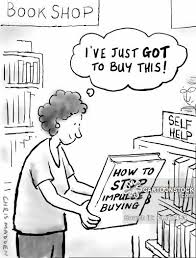
This area of learning will be led by you. Your challenge is to investigate an area of interest within psychology that relates to spending, saving and the actions of consumers and companies.
Values and beliefs
Your use of money (what you spend it on and how much you spend) says a lot about your values, beliefs and what you think is important in life. Things that you may think are important are: caring for the whole community, looking your best, perceived social status (impressing friends and neighbours), education, looking after yourself and not others, fun and living for the moment, travel, family, friends, etc.
Things that you might like to investigate in this area are: what do your, and your family's, use of money say about you? How does your family differ from others in NZ (eg how much does the average household donate to charity or spend on food or restaurants or savings each year )?
Emotions and money
Advertisers are experts at "pressing our buttons" and appealing to our emotions. Often, we don't even think about what's happening and change our behaviour automatically (and spending our money accordingly).
Things that you might like to investigate are: What emotions are specific adverts on TV, online or in magazines trying to evoke? How effective are their attempts? Which types of company appeal to our emotions of fear, desire to be loved/recognised/respected, loneliness, sadness, anger, shame, not belonging, etc?
Impulse buying
Impulse buying is unplanned and on the spur of the moment. Supermarkets are good at encouraging us to walk out with many more items than we planned to buy. They do this with large trolleys, discounts and Point of Sale material, positioning of items at isle-ends, free tastings, lots of food and entertainment in malls to keep you there longer, etc. Sometimes, people get home and soon reallise that they don't need or want what they have purchased! This especially happens when on holiday. It can lead to people feeling guilty or getting into financial difficulty. Having a shopping list and sticking to it has been shown to stop impulse buying!
Things that you might like to investigate are: Research real examples of 'tricks' (strategies) used to encourage impulse buying. Ask other students what they or their family have purchased in this way. Why might people buy things that they don't need?
Spaving
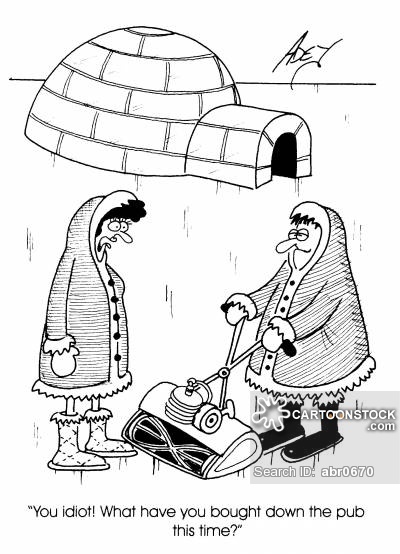
Spaving is spending to save, which means that you buy something because it's discounted and so think that you are getting a product for a bargain. The problem is that you may not have been going to buy the item in the first place and so, really, you could think of the discounted amount paid as being spending that you should not have made! This is different to reallising that you really need an item and consciously going out to research and buy the best deal.
Things to investigate: Research 'discounts' - the law about them, how effective they are, examples of unusual product discounts, etc.
Retail therapy
You know what this is - sopping to make yourself feel better! People say "I just needed cheering up, I deserve it, you only live once, it's ok just this once, etc".
You could investigate: what is meant by consumerism? Why George Bush said that the most patriotic thing Americans could do after '9/11' was to go buy things at the shops! What did people do to 'cheer themselves' before consumerism and shopping mall culture. Why might 'retail therapy' be problematic for some people?
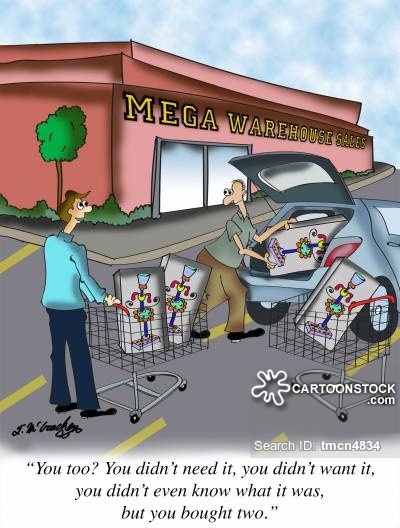 Avoiding the pitfalls!
Avoiding the pitfalls!Earning money is not easy - your time and skills are valuable. Looking after your money and being careful how you use this 'limited resource' is important. You could: Pay yourself first (by saving eg Kiwisaver), Be aware and thoughtful about what you buy (do I need it, can I afford it, why am I really buying it), Avoid watching adverts!, Budget and record spending, Be aware of habits that you have formed that have you spend without thinking, etc
You could investigate: budgeting advice websites, compare how much you save each week with other students.
Kiwis' spending and saving habits: https://www.westpac.co.nz/kiwis-spending-and-savings-habits-revealed
Activity
On Google Classroom, there are links to episodes of Nigel Latta's TV series "Mind over Money". In small groups, watch a 20 minute episode and summarise the main points in the document provided. This enables others, who do not watch the episode to learn from it. The link is below:
Having self control is the secret to becoming wealthy - Here's a Stuff article that explains this:
Mind over Money episodes link https://www.tvnz.co.nz/shows/mind-over-money/episodes/s1-e1
Guest presenters from the TSB Bank
Here's the slide presentation for the visit (click it to open). Your preparation beforehand is to think of questions that you want answered. -
Learning Intentions
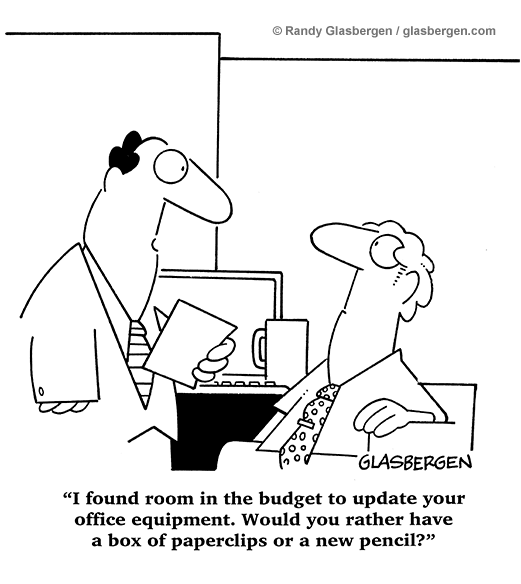
- To explore how financial information is used to make decisions.
- To explore how businesses record financial information.
- To experience running a business as a team in a simulation scenario
- Able to record transactions in a Cash Flow Statement, Budget and Statement of Affairs
- Have run a simulated business as a team.
Financial Statements - Budgets
(and Statements of Affairs next week)
A budget is an estimate of your future income and expenses. It enables you to make decisions, such as: how much can I save each month? Can I afford to go on holiday in July?
A balanced budget has income equal to spending (hopefully where spending includes money saved or invested). If your finances go into 'the red', this means that you have spent more than you have earned and so have not enough assets to repay what you owe (the opposite is called 'in the black').
Types of expenditure
If you need to reduce your spending in order to balance your budget, you will reduce non-essential expenditure (eg trips to the cinema, treats, holidays) before reducing essential expenditure (eg rent, groceries, petrol).
There are are other ways to categorise spending. Fixed expenditure is the same amount for a period of time (eg rent, loan repayments). Variable expenditure increases and decreases as you use more or less of the good or service (eg entertainment, clothing purchases). Semi-variable expenditure has a fixed part and a variable part (eg electricity, in which you pay a 'standing charge' for maintenance & cables and which does not change, and a usage charge, which is based on how much electricity you've used that month).
Depreciation
A budget needs to have enough surplus to allow for depreciation, which is an estimate of how much value your assets (eg cars, furniture) have lost each year. Although depreciation is not cash being paid and so is not usually included in a budget, it is the value of assets being used up (and eventually needing to be replaced) and so needs to be considered when looking at the final surplus. If you don't put enough away for depreciation, there won't be enough savings to replace the asset at the end of its life.Converting figures
It's useful to remember that there are:
12 months in a year; 52 weeks in a year; 2 weeks in a fortnight; 26 fortnight in a year.Comparing budgeted and actual figures
At the end of the month, you should compare your estimates with what you actually received and spent. If you've overspent, this is bad news, as your surplus will be less or your deficit will be larger than expected. The difference between budgeted and actual figures is called the variance. This can be a negative figure if it makes your surplus less, or a positive figure if it makes your surplus larger. -
Learning Intentions
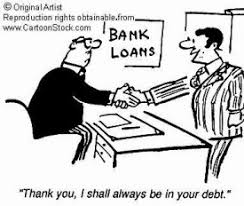
- To explore how businesses record financial information.
- To experience running a business as a team in a simulation scenario
- Able to record transactions in a Statement of Affairs
- Have run a simulated business as a team.
Statements of Affairs
A Statement of Affairs shows the assets, liabilities and net worth of an individual or household at a moment in time.
Assets are owned items that provide some benefit and are controlled by you (eg kitchen table, family car).
Liabilities are amounts that you owe others and have to repay (eg mortgage, overdraft).
Net Worth is the value of what you own less the value of what you owe others. You would hope that Net Worth would increase over time!
When applying for a loan or credit card, banks will ask for the information in a Statement of Affairs.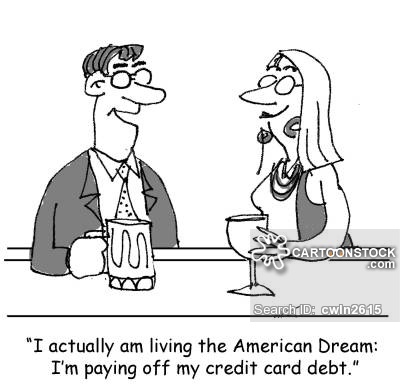
Have a go at the questions in Google Classroom on Statements of Affairs.Extension:
Look up Income and tax rates in other countries. Find out what is meant by a tax haven and find examples of these - find them on Google Maps.
Find out what's the difference between a debit card and a credit card?
Research what interest rate you would pay on a mortgage and would receive on savings with different banks.
How does this compare with the growth rate of other investments, such as shares? - To explore how businesses record financial information.
-
Learning Intentions
- To link our class learning to the 'real world', by involving community experts from a high street bank.
- To explore good practice in spending, saving and borrowing and with a professional.
- Able to describe connections between 'class theory' and best practice in the 'real world'.
- Able to describe how we might change our behaviour to benefit financially in the future.
More on money
The Reserve Bank of NZ is different to the high street banks. It is responsible for managing inflation; producing currency; and regulating banks, finance companies and insurers.Watch this video clip about the RBNZ.
Have a look at the answers to these frequently asked questions.
http://www.rbnzmuseum.govt.nz/learningcentre/Questions.aspx
-
https://youtu.be/eBD5hQVwi2o?list=PL63510640E8F9721AOverview Micro
Basic Macro Overview
Overview Macro
Brief intro
Supply & Demand

